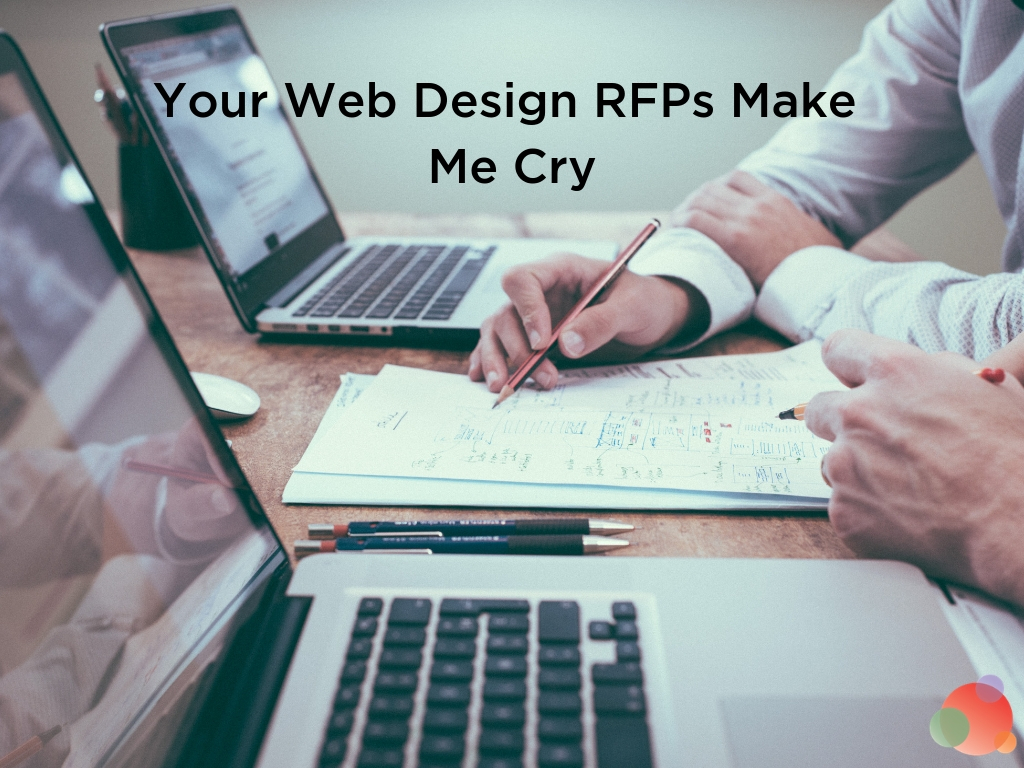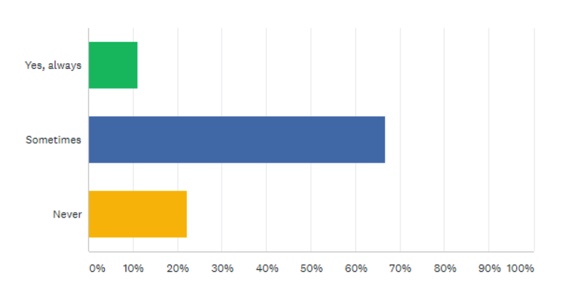 Editors note: While we aren’t big fans of RFPs—and know most agencies have very dismal results when responding to them—there are times they are a necessary evil.
Editors note: While we aren’t big fans of RFPs—and know most agencies have very dismal results when responding to them—there are times they are a necessary evil.
In this series, Jon-Mikel Bailey outlines what questions business leaders who are looking for a new website or redesign should be asking in their RFPs, to ensure the finished product meets their needs and goals.
We’ve worked in web design for more than 16 years now.
Some of the web design RFPs we’ve received should have never left the computer they were written on.
I’m sorry, but it’s true.
A web design RFP can range from useful and informative to downright meaningless boilerplate content.
RFPs can be required by boards and by-laws, but they don’t have to be terrible.
If your RFP has an incomplete scope of work, you will get less than ideal proposals from vendors.
Poorly written RFPs can even lead to massive delays or other issues with projects down the road.
I asked 20 top agency pros five simple questions.
- Do you respond to web design RFPs?
- If never, why?
- What annoys you most about RFPs?
- Is there something on RFPs that doesn’t need to be?
- What’s missing or incomplete?
Let’s look at some of the top answers.

If You Never Respond to RFPs, Why?
- It’s rarely worth the effort to complete an RFP.
- It’s relatively pointless effort to submit one.
- I don’t reply to RFPs that do not want to determine measurable objectives and strategies before designing.
What’s Most Annoying about RFPs?
- It’s essentially like a dating app.
- Lack of specificity and high expectations for low cost.
- Opaqueness. Lack key information about the project.
- You expect to build a relationship over a document.
- It would be helpful to include a budget.
What Does Not Need to Be in a Web Design RFP?
- Grading systems
- Generalizations, marketing jargon, and the word “etc.”
- Mission statement
- Requirements copied from other sources
- Sales pitch for the products/services
What’s Often Incomplete or Missing from RFPs?
- The budget range.
- Any understanding of how competent the client is.
- Details, specifics, realistic cost.
- Goals, objectives, and ways to measure success.
- Detailed requirements and scope.
At Wood Street, we fall into the “sometimes” category.
I’ve put together an RFP guide for you below. This also works if you’re seeking quotes in a competitive pitch.
Follow this guide if you want us or a comparable agency to respond to your RFP.
Whenever we engage a new client, one of the first things we ask is, “Do you have a written scope of work?”
The Scope of Work
You need a complete scope of work before you contact potential vendors.
Here’s why:
- It gets your internal stakeholders on the same page as to what is going to be built.
- You’ll get a better idea of whether your budget matches your scope and you can narrow deliverables as needed.
- It will help you in selecting qualified firms once you know what skillsets you need.
A solid scope of work is a time saver. Fluff is useless at this stage.
At some point your vendor needs to know how your organization formed, and the founder’s story, etc., but not right now.
Right now, they need the following:
- Project Overview
- Required Functionality/Workflow
- Clear and Measurable Goals for the New Website
- Targeted Schedule/Timeline/Milestones
- Website Design and Development Budget
Let’s look at each of these to outline what they mean exactly.
Website Project Overview
Each website has an audience and a purpose. This is the basis of what you need to describe.
- Who needs this website?
- Why do they need it?
- What problems does it solve?
Who Is Your Target Audience?
Every website has a target audience.
Before you do anything, you need to identify the group or groups who will use this website.
For your scope of work, identify the user. This way we have some context to go with the desired functionality.
Don’t worry so much about the demographics or get too granular.
Something like: “This website is for gardening professionals looking for planting tips and tool recommendations.”
This tells us who will be using the functionality you’re asking us to build. From there you can get into specifics.
What Is the Website’s Purpose or Primary Functions?
What should the new site do?
For example, “These gardening professionals are looking for an online utility to help them plan plant groupings”, and “they need a plant lookup tool that matches the plants to the space and the need.”
You can outline the specifics of that utility further along in the document.
For now, focus on the elevator pitch or the 30 second overview of what this website does and what makes it special.
There are likely lots of websites out there offering something like the one you’re asking us to build.
Identify early on what makes your website unique and more desirable than others, if you want the website to be a success.
I recommend reading 10X Marketing by Garrett Moon.
This is a great marketing strategy resource that shows you how to differentiate yourself from the competition.
Ultimately, you’re looking for a competition free zone–a market where no one else offers what you are offering.
Outline the Required Website Functionality/Workflow
Context is always helpful. If you say, “We need a database of plants that can be searched” your needs are too vague.
Instead, tell us who is searching for plants.
Do they already have a base knowledge of horticulture?
What types of searches will they want to perform?
What results will they be expecting?
Where will this data come from?
Be specific with your needs and your web designers will have a clearer view of exactly what you envision.
Map the User Experience (UX)
Your required functionality outline should walk me through the user experience, step by step.
Outlining your workflow in detailed steps will also uncover any roadblocks or missing pieces.
Going back to our plant website example:
- Do they need to have an account to access this utility?
- Does it cost money for them to join?
- Will they be able to save their searches and/or purchase materials?
- Is there any sort of community element that could exist between users?
- Want a discussion area, etc.?
- Ask yourself these types of questions to ensure you cover all user needs, and the functionality or data needed to meet those needs.
You can tell me you want the “Quora of gardening,” but without specifics, I don’t know what that means.
We’ve literally been asked to build an “eBay for antiques”, and given few other details.
Sure, we can get you a proposal, just give me 5 minutes. Would you like some coffee while you wait?
Clearly Define Technical Requirements
We need to know exactly what you’re asking us to build, technically:
- Is it a public facing website or a member’s only online app?
- Does it need to be open source, Microsoft, or something else? (For example, we are an open source shop and will not bid on Microsoft projects.)
- Do you need a content management system like WordPress or Drupal? Do you have a preference?
- Are there other applications like a CRM or marketing automation system that the website must integrate with? Do you have any documentation on integration or information about an API?
Some of this information may be foreign or unknown to you.
If you don’t know or don’t have a preference, say so. It’s perfectly OK to ask for recommendations.
And on that note, I’m saving the rest of my suggestions for next week’s post in this series about web design RFPs.
How do you feel about RFPs? Love them? Hate them? I’d love to hear your thoughts in the comments below.
Photo by Helloquence on Unsplash